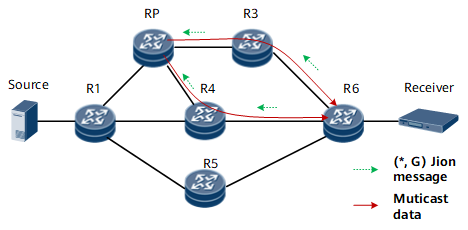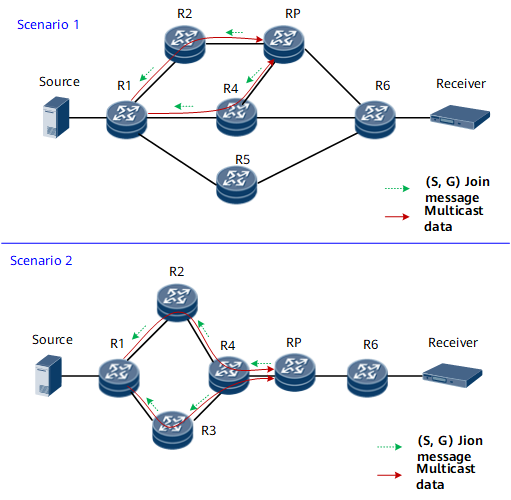Multicast Load Balancing
If equal-cost unicast routes to multicast sources or RPs exist on a multicast network, you can implement multicast load balancing by running the multicast load-splitting command to configure a load balancing policy (as shown in Figure 1 and Figure 2).
After a multicast load balancing policy is configured, a multicast router selects equal-cost routes in each routing table on the device, such as, the unicast, MBGP, MIGP, and multicast static routing tables. Based on the mask length and priority of each type of equal-cost routes, the router selects a routing table on which multicast routing depends. Then, the router implements load balancing among equal-cost routes in the selected routing table.

Load balancing can be implemented only between or among the same type of equal-cost routes. For example, load balancing can be implemented between two MBGP routes but cannot be implemented between an MBGP route and an MIGP route.

